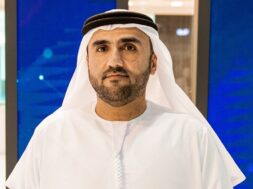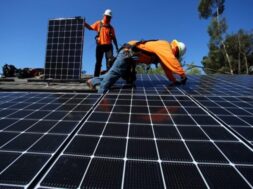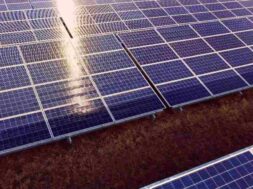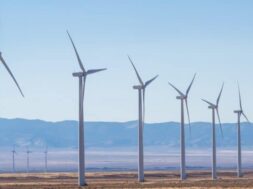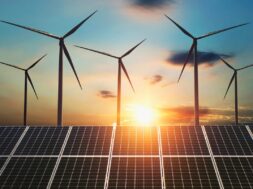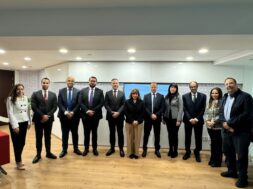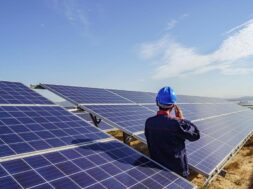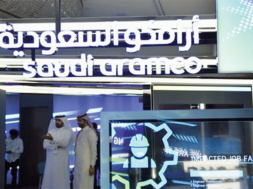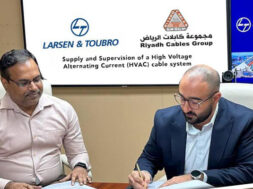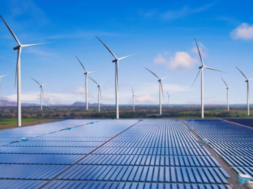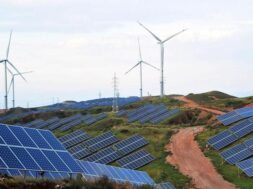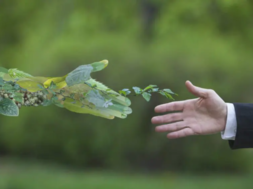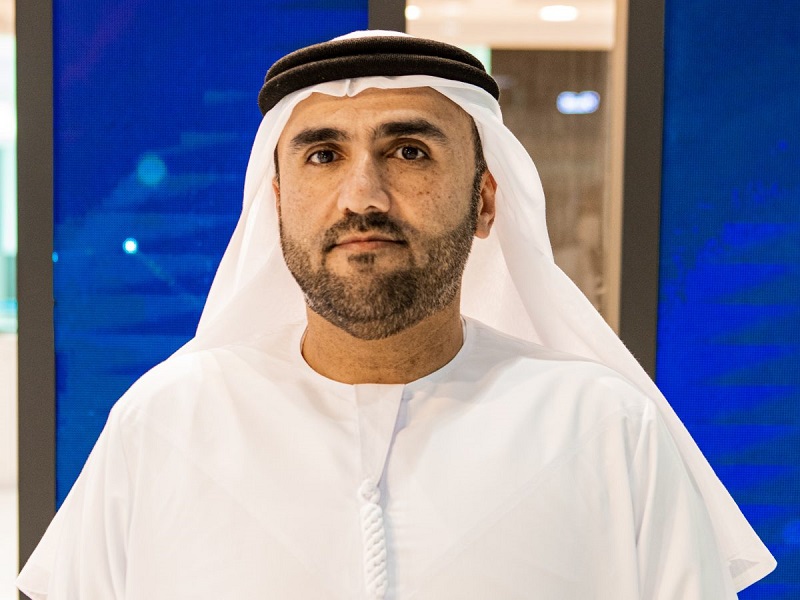
Over the past few years, the UAE has implemented a number of projects to support its overall drive towards reducing carbon emissions. Utilities Middle East caught up with Yousef Al Ali, Assistant Undersecretary for the Electricity, Water and Future Energy Sector at the UAE Ministry of Energy and Infrastructure to talk about the country’s clean energy sector, its evolution and role in aiding the race towards Net-Zero.
Can you give us an overview of the UAE’s current journey to achieve Net-Zero by 2050 and how your ministry is helping to facilitate that journey?
Let me start by giving you an overview of the current efforts by the United Arab Emirates in reducing its overall carbon footprint. About 15 years ago, the UAE embarked on an ambitious clean energy program that consists of renewable energy, basically solar, and also power generation from its peaceful nuclear program. As of today, the UAE has the biggest percentage of clean energy on the grid. We are almost halfway with our Clean Energy Program. We already have around 6 gigawatts (GW) either in operation or under construction. And we have two nuclear reactors out of four reactors already running. The total capacity of the nuclear plant will be around 5.6 GW. So, all together, that makes it around 12 GW, which will represent around 24% of the UAE needs for electricity.
This has itself a huge impact when it comes to the reduction of the carbon footprint. Besides that, looking at our conventional side with the combined cycle power plants, UAE has one of the most efficient combined cycle plants that really emit much less carbon with a very high output.
We also have in place other initiatives to help reduce the carbon footprints such waste to energy, biogas, carbon capture, etc. So, we have a mix of everything in the UAE. Our energy strategy was issued in 2017.
Last year, the UAE announced its intention to reach carbon neutrality by 2050. This will require us to revisit our energy strategy to find ways on how to reduce our carbon emissions. Of course, renewable energy, nuclear, more efficient fleets of combined cycle will all play a crucial role here. But we also need to think outside the box about technologies that can help us. Green hydrogen, blue, hydrogen and carbon capture are all technologies that will help us to achieve our ambitious target when it comes to net zero.
How are you expanding private sector participation in the UAE’s energy transition journey?
Everything we do is guided by our national energy strategy, which was issued in 2017. So, every program implementation is on the basis of this strategy. This strategy calls for 50% clean energy share by the year 2050 and 50% conventional power, which is mainly efficient combined cycle. And of course the private sector has been playing a crucial role in helping us to implement this strategy. You might recall that UAE is probably the first country in this region that started the privatisation program in 1990. And the privatisation program opens the doors for the investors to come, propose solutions and compete on pricing, and to eventually develop projects.
If you look around today and see all the major projects that we have been able to execute as a country, it is because of our ability to attract private sector participation. We have been able to attract talented and experienced companies from well developed economies in Europe, North America and Asia. So, diversity is a key element in our investment strategy and this has been so for a very long time. We have seen this with our nuclear program, renewable energy projects as well as within the conventional power generation.
We have been able to build strong relations with major international power utilities developers such as ENGIE, Marubeni, EDF and JinkoSolar. In Dubai, you will see companies such as ACWA Power from Saudi Arabia. So, the market is already opening and we are attracting a lot of foreign direct investments to the country through the power sector.
We are witnessing similar trends with our neighbours such as, Saudi Arabia, where renewable energy developments are gaining momentum. Saudi Arabia has particularly attracted a lot of attention with its massive renewable energy program. This has created opportunities for exchange of knowledge and expertise within the region. Because of this, it is now possible for ACWA Power, a Saudi company investing in solar projects in the UAE, and Masdar, a UAE company, heavily involved in the Dumat Al Jandal wind project in Saudi Arabia, or a solar project in Jeddah. This is happening because we have a very competitive market here. The GCC market is not an easy one, it is very competitive and has attracted the most experienced and the strongest utilities to the region. That is why we have been able to register the lowest levelised cost of electricity in the world.
As the spotlight shift to renewable energy, what plans do you have for conventional power generation, particularly gas fired generation?
As we seek to expand our clean energy footprint, we also need to be alive to the fact that gas or combined cycle is not replaceable due to the limitations with clean energy. Solar energy is an intermittent source of energy that is only available during daytime. At the same time, the cost of energy storage is comparatively high. This presents a challenge in terms of what renewable energy can accomplish. And unfortunately in the UAE, we don’t have the economical wind resources to complement solar. So, we only can rely on solar and the nuclear will have to be there to cover for the base load requirements. Other countries have more ability to increase the renewable energy percentage because they have the wind resources that normally blow during the night and complement the solar energy.
Therefore, gas will continue playing an important part. You also have to keep in mind that the generation from combined cycle gas plants has evolved over the years to become more efficient. The efficiency has increased from the level of 40% to now about 65% due the latest innovation with gas turbine technologies. This alone reduces the specific carbon footprint per megawatt significantly. We are talking about reducing from half a tonne per megawatt to 300 kg per megawatt. It is a huge advancement that has happened in the sector. If you compare this emission with other sources like coal base, this is three times lesser than the power generated by coal. So, gas is an important fuel that will play a very important role during the energy transition. We have to expand further with this technology to reduce the carbon footprint in the sector complemented by the renewable energy as practical as possible.
Then natural gas also will be used to produce blue ammonia or blue hydrogen, which will be also be another phase in the energy transition until we come up with the ability to produce green hydrogen on a competitive basis after many years.
Talking about hydrogen, where do you see its potential in the UAE and how best can it be harnessed?
First and foremost, we look at ourselves as exporters of energy. Today we export oil and natural gas and we are also active when it comes to the development of renewable energies inside the UAE and outside, with the help of our national companies such as Masdar. So, we look at the opportunity with hydrogen as a natural progression for us as an exporter of energy. Unfortunately, the potential with hydrogen today is limited because of the cost. And this will take time until we are able to produce green hydrogen at an attractive price. But until we reach there, we will have to take different phases. One of the potential phases is blue hydrogen. UAE is well positioned to produce blue hydrogen, because of our natural resource. Because of our petrochemical heritage, we are able to undertake large projects and produce blue ammonia on a massive scale. At the same time, we have also the ability to deal with the carbon dioxide that will be produced from the production of blue ammonia because of our oil reservoirs that can take all of it. So, the opportunity is there, we are watching the market, we are trying to position and react, whenever there is a market requirement, whenever there is a commitment to offtake blue ammonia or green ammonia, we can develop this project and satisfy the market needs.
Today, we see certain attempts that have not yet materialised into real projects, but we are already there, we are well positioned, we have all the ingredients to be an exporter of blue or green hydrogen whenever the conditions allow us to do so.
What is your general overview on access to clean energy project finance in the region and do you see sustainable financing playing any role?
When it comes to sustainable financing, we are blessed in the UAE that we have a strong position as an economy and we are able to finance our projects at very competitive rates. The market has sufficient liquidity to support the development of all our power projects. There are several big projects that have reached financial close successfully at very competitive rates. But financing challenges do exist is many other geographies. For every project to be competitive in any country, two key issue need to be addressed first. You need to have a bankable infrastructure available and a bankable power purchase agreement. Once these two are in place, you are able to attract competitive financing.
I think development banks and other financing institutions need really to support this clean energy journey and provide extended financing facilities to projects that are being developed around the world. Affirmative action is needed to give preferential rates when it comes to renewable energy projects or projects that boost efficiency. Financing costs plays a very important role in the overall cost of electricity. If we are able to get competitive financing, we will be able to deliver electricity at very competitive prices.
Looking ahead, is there anything new that you are doing as the ministry to fast-track the energy transition?
Our role as a ministry is to create synergies between the different stakeholders and create alignment between all the players within the country. We are also active when it comes to the development of strategies and roadmaps. We act as an enabler for all the stakeholders in the country that are venturing into futuristic technologies such as hydrogen.
And we also play an important role in creating bridges with other countries that can support us or can act as future off-takers of these products. We are supporting when it comes to policymaking and in the development of forward looking strategies.
